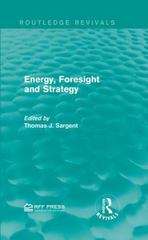Question
7. Transportation costs and comparative advantage The following graph shows a fictional world economy that consists of only two countries, Greenberg and Baxton. Both countries
7. Transportation costs and comparative advantage
The following graph shows a fictional world economy that consists of only two countries, Greenberg and Baxton. Both countries produce boats under increasing-cost conditions. Note that the left-hand part of the diagram is a mirror image of a standard supply-demand diagram, and therefore the supply and demand curves slope in directions opposite their usual directions.
In the absence of trade (that is, autarky), the equilibrium price in Greenberg is, and the equilibrium price in Baxton is. (Hint: Enter all monetary values in full. For example, $7,000 rather than $7.)
In the absence of trade, which of the following statements is correct?
Greenberg has a comparative advantage in the production of boats.
Greenberg has the comparative disadvantage in production of boats.
Greenberg and Baxton are equally good at producing boats.
Now suppose both countries open up to international trade with each other.
For each country, use the previous graph to compute the equalizing price, consumption and production at that price, and the quantity of exports and imports when there are no transportation costs. Enter these amounts into the first two rows of the following table.
Equalizing PriceConsumption at Equalizing PriceProduction at Equalizing PriceExportsImports(Dollars)(Boats)(Boats)(Boats)(Boats)Without Transportation CostsGreenbergBaxtonWith Transportation CostsGreenbergBaxton
Now suppose that the per-unit cost of transporting a boat between Greenberg and Baxton is $2,000.
For each country, use the previous graph to compute the equalizing price, consumption and production at that price, and the quantity of exports and imports when transportation costs equal $2,000. Enter these amounts into the last two rows of the previous table.
Compare free trade in the absence of transportation costs with the case when transportation costs are included.
Which of the following statements about how the trade between Greenberg and Baxton differs in the presence of transportation costs relative to trade when then are no transportation costs are correct?Check all that apply.
Baxton will produce more, consume less, and import less.
Baxton will produce less, consume more, and export less.
Greenberg will produce less, consume more, and export less.
Greenberg will produce more, consume less, and import less.
Step by Step Solution
There are 3 Steps involved in it
Step: 1

Get Instant Access to Expert-Tailored Solutions
See step-by-step solutions with expert insights and AI powered tools for academic success
Step: 2

Step: 3

Ace Your Homework with AI
Get the answers you need in no time with our AI-driven, step-by-step assistance
Get Started


